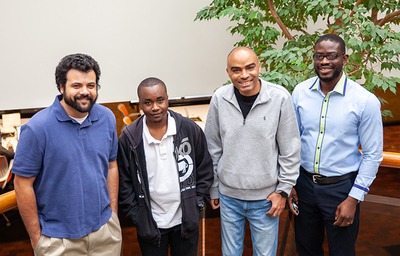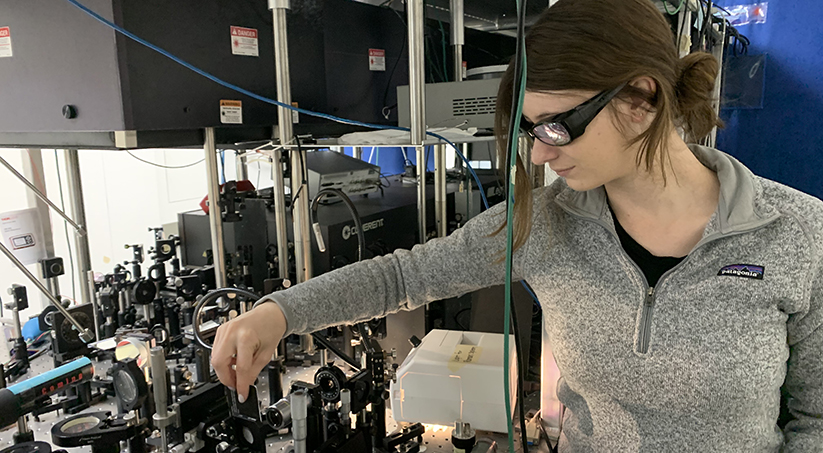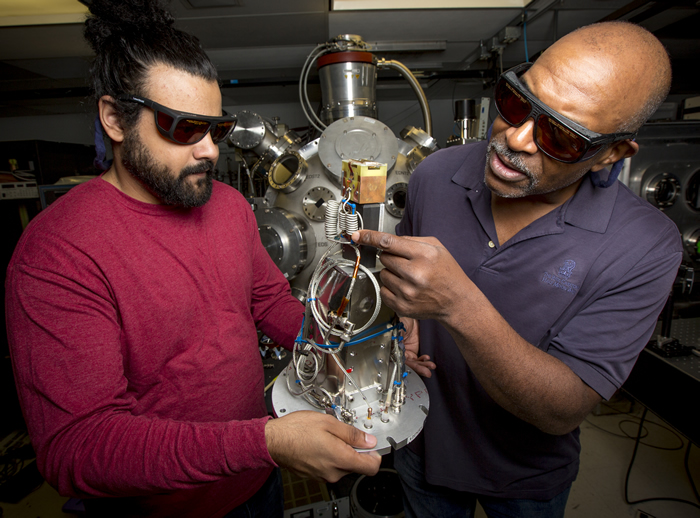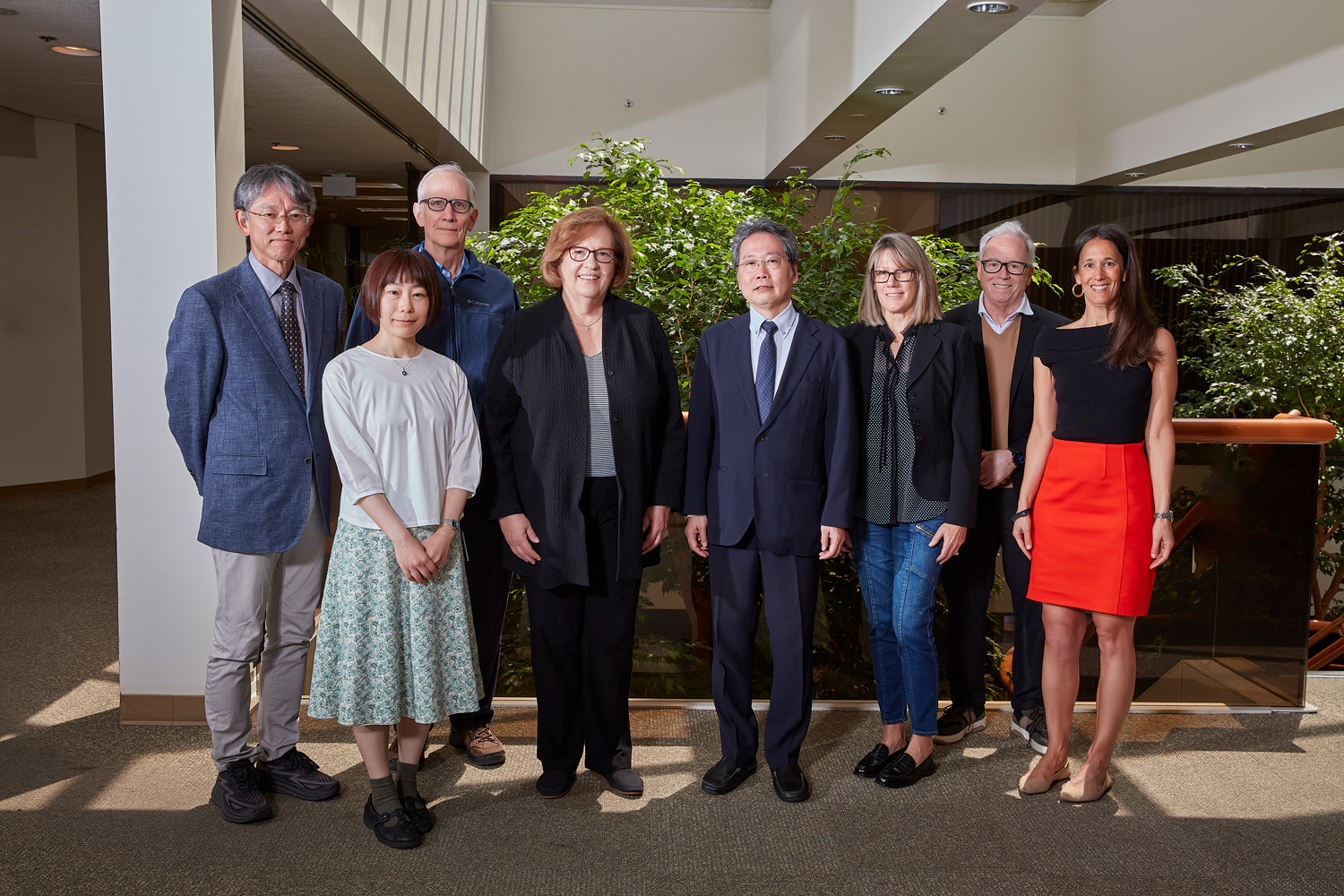Collaboration
The High Energy Density Science (HEDS) Center at Lawrence Livermore National Laboratory (LLNL) facilitates connections across the research community, accelerating efforts to establish new collaborations where experts can share their knowledge, and early-career investigators can receive the mentoring they need to be ready to solve tomorrow’s problems and shape the future of HEDS.
Contact
- Frank Graziani
- graziani1 [at] llnl.gov (graziani1[at]llnl[dot]gov)
Another key benefit of these collaborations is providing the research community with access to LLNL’s world-class experimental facilities, including our powerful lasers and high-performance computers. By fostering access to these resources, we provide a venue for early-career scientists to gain hands-on experience using sophisticated experimental tools, while also sparking ideas regarding future enhancements to experimental resources.
Research Consortia
LLNL’s HEDS Center plays an active role in several research consortia that were formed to jointly address specific research challenges in HEDS. These multi-year, multi-institution efforts include:

The Consortium for High Energy Density Science (CfHEDS) includes LLNL, Florida A&M University, Morehouse College, and the University of California, Merced. The aim of the consortium is to expand educational opportunities for students and research collaborations among the participating institutions.
As part of the consortium’s initiatives, LLNL scientists help develop an enhanced HEDS curriculum for students at the participating institutions. They also foster undergraduate student interest in HEDS careers through colloquia, summer internships, and other events, and they expand opportunities for students and faculty to partner with LLNL researchers on HEDS research.

LLNL’s HEDS Center coordinates the Laboratory’s involvement in the Center for Matter under Extreme Conditions (CMEC), an NNSA Center of Excellence based at the University of California (UC) San Diego. The aim of this consortium is to facilitate interaction between national lab scientists and university leaders, fostering cutting-edge, collaborative research involving extreme states of matter.
Through CMEC programs, undergraduate and graduate students can spend time at a partnering national laboratory, including LLNL, providing opportunities to produce cutting-edge research, while also developing connections with leading scientists in this field. The center also offers programs for postdoctoral scholars, providing them with opportunities to collaborate with national lab scientists. In addition, CMEC offers summer programs that are open to students, postdocs, and professionals, as well as a weekly seminar series that include talks by some of LLNL’s HEDS leaders.
Other CMEC members include Sandia National Laboratories, Los Alamos National Laboratory, the SLAC National Accelerator, and General Atomics. University collaborators include three other UC campuses, plus the University of Rochester and Florida A&M University.
Learn more about the Center for Matter under Extreme Conditions.

Funded by the U.S. Department of Energy (DOE), consortium members are high-power laser facilities located across North America, including LLNL’s Jupiter Laser Facility (JLF). The aim of LaserNetUS is to provide students and scientists with broad access to unique, ultra-powerful laser facilities, and to foster collaborations between scientists who want to advance the frontiers of ultra-fast laser science and its applications.
DOE funding enables LaserNetUS facilities to dedicate a portion of their operational time to support user experiments. Students and scientists can access LLNL’s Jupiter Laser Facility and other LaserNetUS sites, giving them the opportunity to try out new experimental ideas, develop novel techniques, and train tomorrow’s innovators at a high-intensity laser facility.
Scientists who apply for user time at JLF typically conduct research in areas such as plasma physics, materials science, condensed-matter chemistry, and high-energy physics. In addition, LLNL scientists benefit from involvement in LaserNetUS by learning alongside JLF users, while also participating in user-driven experiments at other LaserNetUS facilities.
Learn more:
International Engagement
LLNL’s HEDS Center fosters collaborations with institutions outside the United States, connecting experts from across the globe, who share knowledge and resources to accelerate solutions in fusion science, laser technology, and other shared challenges in HEDS.

The HEDS Center is the focal point for LLNL’s engagement with Osaka University in Japan, which involves collaborative research spanning a broad range of HEDS areas, including picosecond laser‒plasma interactions, collisionless shock experiments, and ultra-fast neutron detector diagnostics. In addition, Osaka University scientists travel to Livermore for experiments at LLNL’s National Ignition Facility, and they help model results. LLNL scientists also travel to Japan to conduct precursor experiments at the Laser for Fast Ignition Experiments (LFEX) at Osaka University.
The collaboration includes opportunities for faculty sabbaticals, scientist exchanges, and student internships. For example, Professor Fujioka from Osaka University spent a sabbatical year at LLNL conducting computational research in fast ignition. The HEDS Center at LLNL then hosted his graduate student, Hiroki Morita for a six-month residence at LLNL, as part of his research regarding transport models of fast ignition experiments.
Learn more about LLNL’s collaboration with Osaka University.





